Related Research Articles
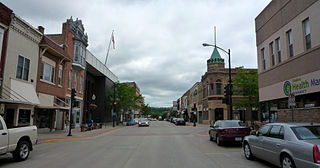
Decorah is a city in and the county seat of Winneshiek County, Iowa, United States. The population was 7,587 at the time of the 2020 census. Decorah is located at the intersection of State Highway 9 and U.S. Route 52, and is the largest community in Winneshiek County.

Wood carving is a form of woodworking by means of a cutting tool (knife) in one hand or a chisel by two hands or with one hand on a chisel and one hand on a mallet, resulting in a wooden figure or figurine, or in the sculptural ornamentation of a wooden object. The phrase may also refer to the finished product, from individual sculptures to hand-worked mouldings composing part of a tracery.

Rose-painting, rosemaling, rosemåling or rosmålning is a Scandinavian decorative folk painting that flourished from the 1700s to the mid-1800s, particularly in Norway. In Sweden, rose-painting began to be called dalmålning, c. 1901, for the region Dalecarlia where it had been most popular and kurbits, in the 1920s, for a characteristic trait, but in Norway the old name still predominates beside terms for local variants. Rose-painting was used to decorate church walls and ceilings. It then spread to wooden items commonly used in daily life, such as ale bowls, stools, chairs, cupboards, boxes, and trunks. Using stylized ornamentation made up of fantasy flowers, scrollwork, fine line work, flowing patterns and sometimes geometric elements give rose-painting its unique feel. Some paintings may include landscapes and architectural elements. Rose-painting also utilizes other decorative painting techniques such as glazing, spattering, marbleizing, manipulating the paint with the fingers or other objects. Regional styles of rose-painting developed, and some varied only slightly from others, while others may be noticeably distinct.
Carl Johan Trygg, formally Carl Johan Thrygg, also knowns as C. J. Trygg, woodcarver, was one of the recognized masters of twentieth century woodcarving, most famous for Scandinavian flat-plane style of woodcarving. Between C. J. Trygg and his sons they carved over 10,000 figures. Many of his carvings were sold to tourists for approximately $10.00 USD. Adjusted for inflation what cost $10.00 in 1929 would cost $108.05 in 2005.
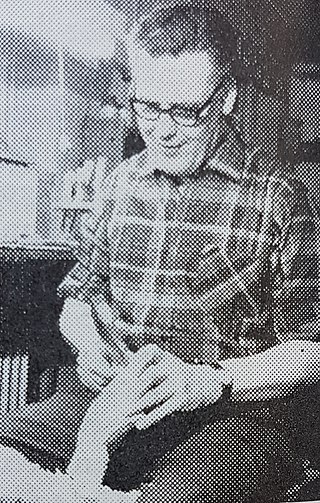
Carl Olof Trygg, was one of the recognized masters of 20th century woodcarving, most famous for Scandinavian flat-plane style of woodcarving.

The Scandinavian flat-plane style of woodcarving is a style of figure carving. The figures are carved in large flat planes, created primarily using a carving knife. Tool marks are left in the carving and very little rounding or sanding is done. Emil Janel, a Swedish-born American artist, was considered by many to be one of the best of this genre.
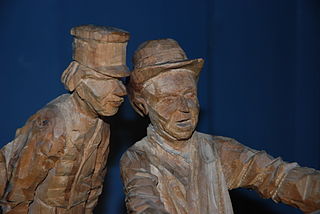
Axel "Döderhultarn" Petersson, formerly Axel Petersson, was a Swedish wood carver who was one of the recognized masters of wood carving, most famous for Scandinavian flat-plane-style woodcarving.
In 1989, a group of ten wood carvers, with the common goal of promoting the art of caricature carving, met in the back room of Paxton Lumber Co. in Fort Worth, Texas to discuss the formation of a national organization to further that goal. From that meeting came the Caricature Carvers of America (CCA). The founding group consisted of fifteen nationally recognized wood carvers representing a broad geographical distribution as well as diverse styles of caricature carving. Since the inception of the CCA, two members have resigned, four have converted their membership to "emeritus" status, three are deceased, and eighteen new members have been elected, bringing the 2003 membership to 25. The newly formed organization made no claims of being "the best," although many of the members are readily recognized as being among the elite in the carving community. The combined membership has garnered several hundred first place ribbons, including many "Best-of-Show", in carving competitions across the nation; they have published over 80 books on wood carving; and they regularly teach wood carving seminars throughout the United States and Canada.
Lars Trygg, woodcarver, was one of the recognized masters of 20th century wood carving, most famous for Scandinavian flat-plane style of woodcarving.

Herbert S. Anderson, known commonly as H. S. "Andy" Anderson, was an American woodcarver, one of the recognized masters of 20th-century woodcarving, most famous for Scandinavian flat-plane style of woodcarving and caricature carving.
Harold Enlow began woodcarving in the 1960s while stationed in Okinawa, Japan. He has become one of America's leading wood carvers. He is a member of Caricature Carvers of America.

Marvin Robert Kaisersatt is an American woodcarver. He was born in Montgomery, Minnesota to Bessie and Benjamin Kaisersatt.
Nils Trygg (1914–1951) was one of the recognized masters of twentieth century woodcarving, most famous for the Scandinavian flat-plane style of woodcarving. Nils Trygg was born in Småland, Sweden. He was one of three sons of Carl Johan Trygg and Maria Axelina Andersson. Nils worked with his father carving wooden figures of various common people in the Scandinavian flat-plane style of woodcarving. Between Nils Trygg, his father and two brothers, they carved over 10,000 figures. Many of his carvings were sold to tourists for approximately US$10. Adjusted for inflation what cost $10 in 1929 would cost $108 in 2005.
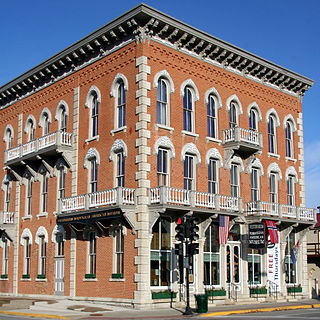
Vesterheim Norwegian-American Museum in Decorah, Iowa is the National Norwegian-American Museum and Folk Art School, with over 33,000 artifacts, 12 historic buildings, and a library and archives. This treasure showcases one of the most extensive collection of Norwegian-American artifacts in the world and highlights the best in historic and contemporary Norwegian folk and fine arts. Some of its buildings are on the National Register of Historic Places.
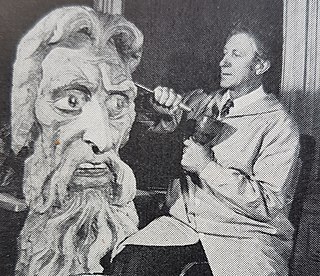
Emil Janel was a Swedish-born, American artist. A still life painter, he is mainly known for his caricatures in the Scandinavian flat-plane style of woodcarving, and is considered by many to be one of the best of this genre.
Nordic Fest is a weekend festival held annually in Decorah, Iowa, to commemorate the traditional customs and culture of Scandinavian countries, especially Norway. The event always occurs over the last weekend in July and often draws estimated crowds of 50,000 to 75,000.
Gerhard Brandt Naeseth was an American librarian and genealogist who specialized in the field of Norwegian-American immigration.
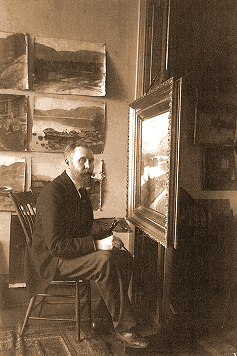
Herbjørn Nilson Gaustå also Herbjorn Gausta was an American artist who is best known for his landscapes, portraits, and scenes from rural settings. He left an early record of immigrant life in his portraits and paintings and helped establish a place for art in the culture of Norwegian-Americans.

The Döderhultarn Museum is a museum in Oskarshamn, Sweden that exhibits the carved works of Axel Petersson Döderhultarn.
Ragnvald Pedersson Einbu was a Norwegian woodcarver and painter.
References
- ↑ "Harley Refsal". Caricature Carvers of America.
- ↑ "Vesterheim Norwegian-American Museum". Archived from the original on 2013-05-08.
- ↑ "Harley Refsal". North House Folk School.
- ↑ "Milan Village Arts School".
- ↑ "Norsk Wood Works".
- ↑ "John C. Campbell Folk School".
- ↑ "2012 Woodcarver of the Year: Harley Refsal". Woodcarving Illustrated. Archived from the original on 2013-03-03.